Chevrolet Corvette Vs Porsche 718 Boxster Vs Toyota Supra: Sports Car Shootout

With a Boxster’s low nose filling the rearview mirror, and the unmistakable tail of a Supra ahead, I half-expect the Stealers Wheel classic tune to start playing on the radio of the 2021 Chevrolet Corvette Stingray.
Alright, I certainly don’t feel “stuck” driving this drop-top version of the current AutoGuide Performance Car of the Year. As work days go, threading Chevy’s hot new thing down a winding road, with managing editor Kshitij and photographer Harry as company, this is a high-water point.
Get a Quote on a New Chevrolet Corvette, Porsche 718 Boxster, or Toyota GR SupraWe’ve assembled these three for a very specific purpose. The Toyota GR Supra, here in eye-catching A91 Edition form, represents where the Corvette came from: a reasonably priced, front-engined two-seater. Nipping at the Chevrolet’s four exhaust tips is the 2021 Porsche Boxster GTS 4.0. The Porsche plays in the same space as the new ‘Vette. It’s mid-engined, it produces its power without the aid of turbochargers, and it comes closer to the Chevy’s 495 horsepower—at least on paper. The turbocharged Supra is still an important foil though, as this one lists for less than an absolute base-spec C8 Stingray.
Can the Corvette defend itself on two fronts? We spent a day in the beautiful Forks of the Credit area to find out.
Styling
Is the mid-engined Corvette a good-looking vehicle? It’s a question that never produces the same two answers. There’s no doubt it’s the most eye-catching of the trio, rendering the other two essentially invisible. Those who know what it is gawk and pull out their phones; those who don’t do the same, and ask if it’s the latest Lamborghini or Ferrari. I said it in the solo review of the Corvette and I’ll say it again: Chevrolet has crafted a bona fide supercar with this car.
SEE ALSO: 2021 Chevrolet Corvette Stingray Convertible Review: The Friendly SupercarThe styling is fussy, especially at the rear, where every line is at odds with the ones around it. “It looks a tad too wide from the rear,” says Kshitij, “you’re never quite sure if the rear would fit through a narrow gap.” In addition to the width, the tail is boxy, a big (and quick) rectangle to follow through the twisting corners. Harry sums it up succinctly: “the proportions feel more like an adaptation rather than an evolution,” as if the C7 look has been massaged to fit over the mid-engined platform.
With a halo model that has looked remarkably similar over its 60-year lifespan, Porsche is the poster child for steady evolution. Even the 718 can easily trace its roots back to the original Boxster design—something Porsche is capitalizing on with the Boxster 25. This GTS tester is done up in GT Silver with a bordeaux red interior, a combo that snapper Harry can’t get enough of at dusk. It’s a classic look, but in this company, that’s a synonym for plain. The Boxster flows through traffic relatively unnoticed, its pebble-smooth styling getting the occasional knowing nod. It’s the 4.0’s angry engine note that draws more attention than its looks.
Then there’s the Supra. The blue (“Refraction”) exclusive to this A91 Edition looks fantastic, while the black details provide the necessary contrast. That includes the lip spoiler out back, a detail that was strangely absent when we first drove this particular example late last year. The Supra looks like nothing else on the road—if you squint you do see the A80 relation up front—yet remains a rare enough spot to draw attention.
Bottom Line: The Boxster is cleanly styled, if a little boring. The Corvette is neither of those things, but none of us find it particularly pretty, either. If anything, the Supra really comes out of this match-up looking rosy. The proportions, the double-bubble roof, the tasty curve of that rear spoiler—it’s a great-looking car that falls on the right side of showy.
Of course, we’re a bunch of jaded auto journos, so your opinion may differ.
Powertrain and Driving Feel
Pick your poison: a silky-smooth turbocharged inline-six, a burbling big-bore flat-six, or six-point-two liters of all-American V8. There are no losers here.
In a straight line, the Supra keeps the others honest, but the muffled exhaust note means it never matches their drama. Even with a bump in quoted power for this year (to 382 horsepower and 369 lb-ft of torque), that BMW-sourced inline-six feels like it’s fibbing at weigh-in. This is a 400-horsepower car, easy. A ZF eight-speed automatic is a perfectly good transmission, well-suited to the abundant torque on offer. It’s no match for the slickness of the dual-clutchers in the Chevy and Porsche though, and its paddle shifters feel more like buttons.
The steering is light yet consistent. The nose seems in a different area code though, with the distinct feeling of sitting on the rear axle in this front-engined car. Combine that with the high driving position, and the Supra can sometimes feel like riding at the back of a rollercoaster instead of the front. You end up a half-step behind the nose, and pushing to catch up only makes the Supra feel slipperier. This is the tail-happy car of the trio, with less weight over the driven wheels and the prodigious amounts of torque they’re tasked with. The brakes are progressive, with a positive feel right from the top of the pedal travel.
SEE ALSO: Chevrolet Corvette vs Porsche 718 Boxster vs Toyota Supra: Sports Car ShootoutGiven the Chevy’s swept volume nearly matches the other two combined, you’d expect it to be the unruly rebel of the pack. It has the rumble on cold starts, sure, but the C8 quickly calms down to a surprisingly subdued hum. Is there really 6.2 liters lurking under that long rear deck? The sport exhaust box was ticked, right? For a 495-horsepower, 470-lb-ft engine, the LT2 is surprisingly soft-spoken, at least at first.
It might not have the most mellifluous idle, but the shove of that big V8 is undeniable. From any gear, from any speed, the C8 lunges forward, quickly finding its singing voice. “Easily the best-sounding engine here,” says Kshitij and, at least for the first half of its rev range, Harry and I agree with him. Special mention goes to Chevrolet’s dual-clutch transmission. Simply put, it’s fantastic, whether left to its own devices or directed via paddle shifters. The eight-speed unit matches the Porsche’s PDK for speed, and will happily slur ratios when cruising. None of us love the squircle shape of the steering wheel, but we do enjoy its smooth, direct action. The Corvette’s tiller is nicely communicative, though more weight wouldn’t go amiss. Switching to the meaner drive modes only adds an artificial amount of resistance.
Kshitij calls the ‘Vette “a big friendly supercar” after his stint in it. He nails it: underneath all those exterior creases, the Corvette is the most accessible car here. Despite its supercar looks, the Corvette is the grand tourer of the group. The trick magnetorheological suspension allows it to gracefully glide over broken tarmac, yet tighten up when the right road beckons. The different driving modes offer up tangible differences, progressively ratcheting up the ride stiffness and engine response. Even on its most aggressive setting though, the C8 remains comparatively soft. There’s no masking the extra hundred pounds it carries over the lithe Boxster.
The Boxster is pure, distilled sports car. No fancy magnets in the suspension here, which admittedly makes it a less agreeable long-trip companion. There’s an edge to the low-speed ride that can grate in the city, no doubt. Once out onto the winding roads of the countryside, the 718 breathes with the tarmac, responding to inputs so quickly you’d swear the front wheels were directly connected to your brain. Nope, just that sweet-feeling Alcantara steering wheel, with a healthy amount of weight and detailed feedback.
SEE ALSO: 2020 Porsche 718 Cayman GT4 Review: Upon Reflection, Some Other Things Might MatterWe love the power delivery of the big, 394-horsepower 4.0-liter: smooth, fast-revving, surprisingly torquey (the PDK unlocks eight extra pound-feet, for a total of 317 lb-ft). We don’t love its low-range sound, though. “Would trade away some of the power for less droning on the highway,” says Harry, who was the one tasked with bringing the Porsche here. Kshitij is even less forgiving, saying the “engine sounds like a broken washing machine at idle.” The flat-six needs revs to shine, coming alive at 5,000 rpm. From there the note hardens, finally crescendoing at nearly 8,000 rpm. It’s an almost feral battle cry, enough to scare birds out of trees.
The PDK is one of the best examples of the breed, with less low-speed hesitation than the Corvette’s ‘box. On the move it doesn’t feel much slower than the more powerful ‘Vette; only on the highway do the too-long gear ratios make the gap noticeable.
And the Boxster’s brakes! Smooth and progressive, the steel discs stand up to repeated stops without fade.
In GTS 4.0 form, the Boxster is an elegant, cohesive sports car experience. No one element dominates; instead, it all blurs together, combining for a four-wheeled equivalent of umami more potent than anything else here.
Bottom Line: There’s no arguing that by the numbers, the Vette offers untouchable levels of performance for the price. More than that, the C8’s MagneRide dampers allow it to cruise better than either of the other cars, too. Around town, the Boxster has a less forgiving ride; when pushed outside of city centers, the Supra can get sloppy.
The magic suspension can only carry the Corvette so far though, and it’s the extra hundreds of pounds the Bow Tie car carries that count against it on the best driving roads. Out here, it’s the sublime Boxster 4.0 that we all want to take for Just One More Drive.
Interior and Cargo Space
Like the exterior styling, the C8’s cockpit is dramatic, a wall of controls between the seats dividing the space between mission control and spectator sidelines. From the fun side, the sense-of-occasion meter is pegged. The term “cockpit” gets thrown around a lot in this industry, but the Corvette really does feel like a space for pilots as much as drivers. Passengers will find it less enjoyable though, especially if they want to, oh I dunno, fiddle with the radio settings. It’s hard not to feel like living, breathing ballast from the right side of the interior. Space is acceptable once slotted in, with enough seat adjustments to accommodate larger drivers.
SEE ALSO: 2021 BMW M3 Review: More Pedals Equal More FunWithout an engine up front, the view out front of the C8 is excellent. The story is less good looking back though, with a slightly tented rear deck (necessary for the folding roof) dominating the rearview mirror. A glance over the shoulder shows more black-painted nacelle than anything else, like say, that car in the next lane trying to snap a quick picture. The Corvette’s direct steering and ace front sight lines build confidence, but the blinders out back suck it back up.
Even if it’s the oldest car here, the 718 remains the standard for fit and finish. Every piece aligns just right, even if there’s more plastic than seems reasonable on a six-figure car. The Boxster has more buttons than even the ‘Vette, but the difference here is that even the passenger can use them with ease. Harry docks it points for the HVAC controls sitting behind the shifter, which is fair. None of us are too pleased with the pop-out cupholders above the glovebox, either. Stick a cold drink there and watch as it perspires all over the center console. The pitch-perfect seating position, with the classic three-dial setup ahead, is unimpeachable.
Considering its more approachable price tag, the Supra presents itself well here. The interior is pure BMW, meaning a logically laid-out center stack complete with a don’t-call-it-iDrive rotary dial. Blue stitching adds a touch of visual interest, while the seats are comfortable without being too aggressive. As the only one with a kid at home, Kshitij is all too happy that the Supra has a child seat tether up front.
As the only coupe of the group, the Supra scores big on practicality. You can easily toss things into the trunk straight from the seats, and the Supra will swallow more goods than either mid-engined machine. Yes, even the Corvette and it’s famously golf-bag-sized rear trunk.
Bottom Line: Picking a winner in this category is tough. The Supra is the practicality champ, even if its well-finished interior is too BMW business-like. The Boxster sets the bar for interior quality—other than the flimsy cupholders—but the interior design feels dated. We can’t accuse the Corvette of such a thing: this isn’t a driver-focused interior, this is driver-obsessed. Sorry, passengers. When we tally up the votes, it’s the Boxster that squeaks by as the winner.
Tech and Features
The only thing sharper than the Corvette’s styling is its cutting-edge tech suite. The instrument panel is completely digital, and houses all the information a driver could possibly want. Swap driving modes and the whole layout changes, the Corvette again supplying theater at every opportunity. A head-up display provides additional information on the windshield, keeping the driver’s attention closer to the road ahead. Meanwhile, the 8.0-inch infotainment screen uses Chevrolet’s latest UI, which is clean and easy to read at just a glance. It’s speedy, too.
That’s not something we can say about the 718’s infotainment. A small screen and outdated graphics lead Kshitij to call it “one generation too old.” Just one of the three dials ahead is digital, and there’s no head-up display either. To Porsche’s credit, it does allow drivers to drop a map into the right dial, which proves useful as we hunt for our next photo stop. The Porsche is the only one that needs a wired leash for Apple CarPlay; Android Auto isn’t even supported.
The Supra strikes a balance between the others. Its infotainment system runs an older version of iDrive, which is slightly slower and aesthetically pleasing than the latest models. That still makes it much better than Toyota’s homegrown Entune, though. A digital instrument panel and HUD keep the driver abreast of the Supra’s vitals.
The Toyota misses out on the ventilated seats of the other two cars. That becomes a glaring omission on a hot summer day, since the Supra can’t lower its roof like the others. Dropping the windows introduces the car’s infamous buffeting, too.
SEE ALSO: 2021 Lexus LC Convertible Review: A Future ClassicBottom Line: The Chevy puts the other two to shame, with a modern, eye-catching digital instrument panel, and the best infotainment system to use. Too bad only the driver can easily access it, then. Still, the Corvette is the clear winner here.
Pricing and Value
As tested, of course this is the Supra’s game, ringing in at $55,790 ($70,680 CAD). The A91 Edition is the absolute peak of the lineup right now too, whereas the other cars only start north of that sticker. Even a base-model 718 Cayman rings up for more at $61,850 (or slightly cheaper in Canada for $68,600 CAD), and we all know that’s a unicorn: no Porsche skips a trip through the options list. Porsche will charge you an extra $2,100 ($2,400 CAD) for the open-air Boxster experience.
The 718 Boxster GTS 4.0 is, from a certain point of view, a bargain too. It’s the least-expensive way to get Porsche’s drop-top mid-engined machine with the glorious flat-six, after all. We’re glass-half-full folks around here. Still, we’re talking $90,850 ($99,100 CAD) before options—of which this car has plenty. The final tally is $109,080 ($119,300 CAD), including the PDK transmission, Premium Package, and even ventilated seats, which makes it the priciest of the bunch.
It’s not as if the Corvette is far behind, though. Chevrolet made sure this convertible was well-optioned too, landing at a final as-tested price of $94,325 ($113,363 CAD). What surprised us was that even at that heady price, the ‘Vette feels worth it. Material quality isn’t far removed from the Porsche, and there are more toys on board.
SEE ALSO: 2021 Ford Mustang GT Convertible California Special Review: Cloudy with a Chance of (V8) ThunderIf you can find a dealer who has stocked a base model coupe, and is willing to sell it without markup, you’ll get 80 percent of the experience of this car for just $60,995 ($71,398 CAD). The convertible up-charge is a steep $7,500 ($9,000 CAD). Worth it, since you don’t have to worry about where to store those roof panels, and it doesn’t eat up any additional cargo space.
Bottom Line: Looking at numbers and little else, you can get the Toyota and a dedicated track car for less than the price of the Chevy or Porsche. A base-model Corvette coupe makes it look poor value, however. As assembled, the C8 still feels like the value play of the group, offering so much more car than the minimalist Porsche for less coin—slightly so in Canada, and a significant amount in the US. The Chevy wins here.
Verdict: Chevrolet Corvette vs Porsche 718 Boxster vs Toyota Supra
There’s no point beating around the bush here: the Supra is the first to fall. All three of us believe it’s a fun car, regardless of who builds it, or where. The classic front-engine layout can provide lots of tail-out antics if you’re so inclined, but the Supra lacks the precision of the mid-engined cars for when you want to really tackle a good road. It’s plenty quick, and its practical shape makes it a great everyday sports car. That the Supra could even hang within the vicinity of the others at this price shows the inherent rightness of what Toyota and BMW have crafted with this platform.
So we come to the mid-engined machines. Separating these two is like asking us to pick only one type of pizza for life. The Corvette is a revelation: Chevrolet had maxed out the capabilities of the front-engined models, and it showed in the final Z06 and ZR1. The C8 Stingray is so much more cultured: as smooth as a sedan around town, yet able to shrink around its driver when the right road presents itself. Not too much, though: it still feels like the largest car here thanks to awful rear visibility. Its V8 engine is just a little too docile, as well.
We can’t ignore the Corvette’s value-for-money angle, and that’s especially critical when we factor in that this is only the start of the range. The upcoming Z06, with its wailing flat-plane crank V8, could very well embarrass the supercar royalty on every level. Taken as a whole, from bargain $60k entry model right through to whatever hypercar-humbler is waiting in the wings, the Corvette offers a Baskin-Robbins amount of flavors to please darn near everyone. That’s (part of) why it won our AutoGuide Performance Car of the Year title, after all.
But we’re not testing the whole range: we’re testing the three cars you see here. And on this day, on these roads, in this weather, it’s the 718 that wins each of us over. It isn’t perfect: the big flat-six is droney at low rpms, the infotainment could retire, and its around-town ride is harsher than the magnet-aided Corvette’s. Yet the fluidity with which the Boxster drives is unparalleled. As sweet as the 4.0-liter sounds above 6,000 rpm, it’s not the star; rather, every part of the car works in utter harmony. The Boxster provides the highest highs when it comes to pure driving enjoyment, and thus it’s our pick.
Become an AutoGuide insider. Get the latest from the automotive world first by subscribing to our newsletter here.

Kyle began his automotive obsession before he even started school, courtesy of a remote control Porsche and various LEGO sets. He later studied advertising and graphic design at Humber College, which led him to writing about cars (both real and digital). He is now a proud member of the Automobile Journalists Association of Canada (AJAC), where he was the Journalist of the Year runner-up for 2021.
More by Kyle Patrick



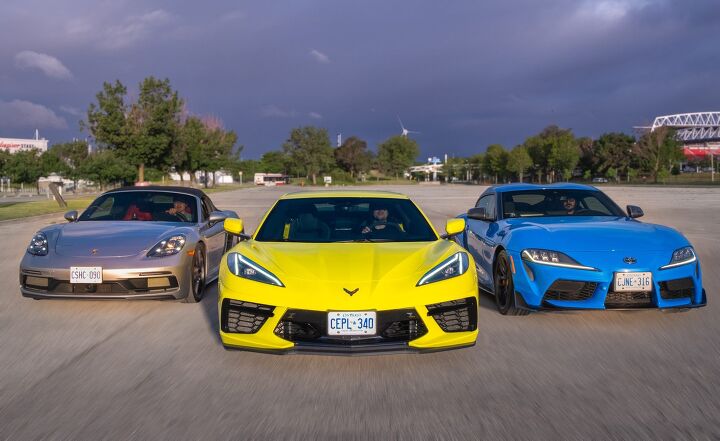

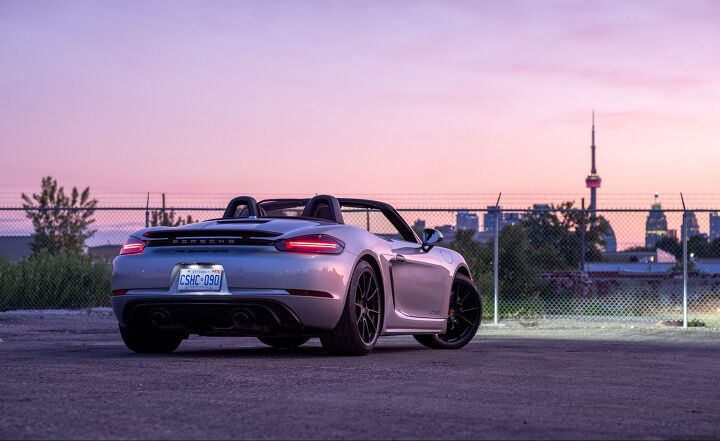





























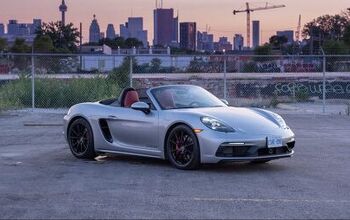
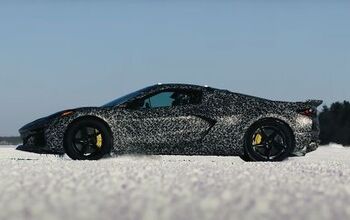
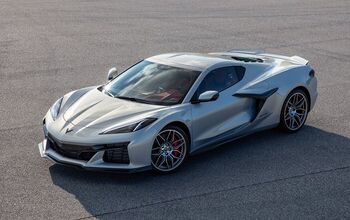
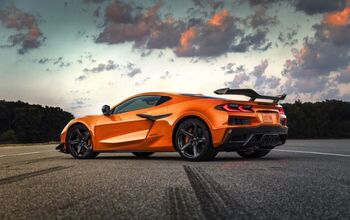
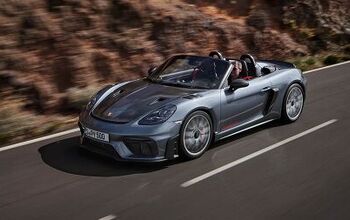
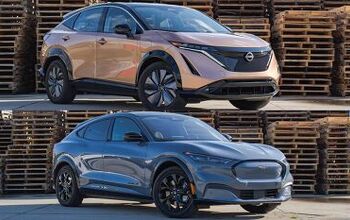
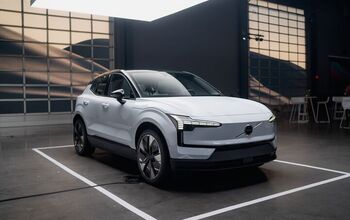

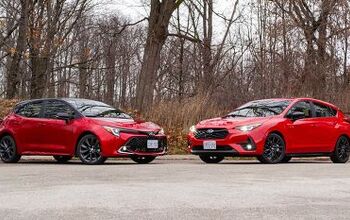





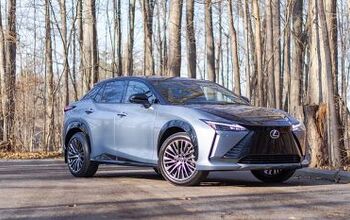
Comments
Join the conversation